About Li-Ion technology and (teardown) Review of Ambrane P880
TEARDOWN
I did a quick inspection of the outer covering and I could not find any screws. This device was shut tight with clips… A lot of them. I tried using guitar picks and other plastic tools, but the cover was destined to break before it would come off. I had to bring metal tools into the scene. I was aware that they would do at least some damage before they manage to open it up. Using the backside of a spoon (LOL), I managed to open it up and as I pulled, I broke almost all the clips that held it in place. Such clips!! To my despair that was not enough, as the batteries were almost welded to the covers by this super-glue-paper thing. Somehow I managed to take it off and voila!!
Four 18650 Li-Ion cells. I imagined there would be three as expected from my calculations (8000mAh/3 = 2600, which is the about the average capacity for most 18650 cells). Also, I was a bit disappointed that they were not original Samsung SDI cells (Ambrane ships original Samsung SDI cells in their slightly more expensive 10400mAh power bank which goes for around 1400 bucks), but what-the-hell, this powerbank has been giving me perfect performance and more for just a fraction of what it would cost if it had been from a well-known brand like Portronics or Anker. I don’t even expect 500 charge-discharge cycles from these, let alone 800 cycles for a good quality one, but even 250 cycles is enough as one cycle gives me atleast three cycles for my phone’s battery. Thats an equivalent of 750+ cycles for my phone’s battery, which is rated at 800 cycles.. So, these will last me atleast two years if the batteries are taken care of well enough.
Time for a little circuit analysis. I’m no electronics engineer but I do know a little about DC-DC converters. All powerbanks work on the principle of DC-DC boost conversion. It chops the input power (at 3.8 volts) to small slices. The first slice goes to the inductor which stores it. Next, it adds the inductor’s stored power to the second slice in series, which ‘boosts’ the voltage. An IC has all the necessary logic to do that at very high speed (hundreds of kilohertz). Finally, the output capacitor smoothens the output waveform to an almost DC look-alike. I tried to find the name of the IC, but there was nothing written on it. The DC-DC conversion requires only a capacitor and an inductor for the conversion besides the IC, really. The other parts of the circuit are there for the different kinds of protection we encountered.
The efficiency for conversion usually lies between 75 to 85 depending on the difference in voltage boosted. In this case, I expect it to be around 85% (I’m not going to measure it).
The power bank was at 100% charge when I ripped it open. I was interested in finding out the voltage at 100%… It was exactly 4.20 volts. The charging circuit literally cuts off the charging once it reaches 100%. To verify that, I measured the current flowing into the powerbank when it was 100%. It was zero (actually, it was 301 uA, but even ten times that current isn’t enough to drive an LED). Verified.

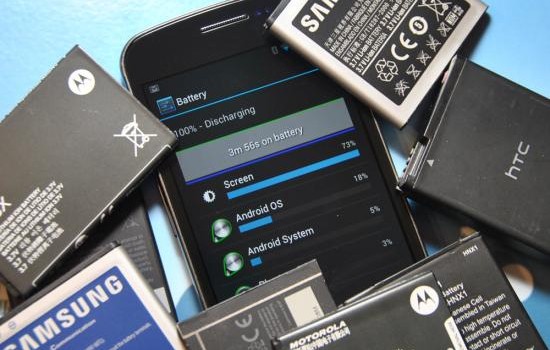
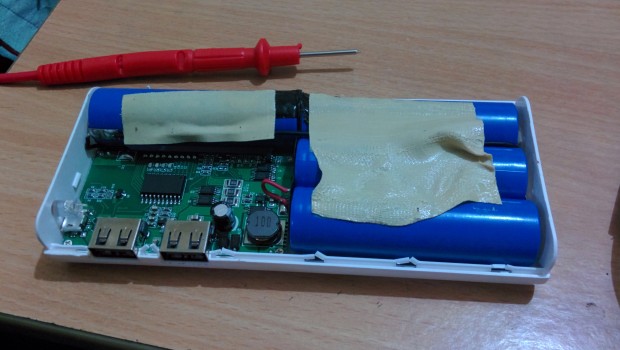
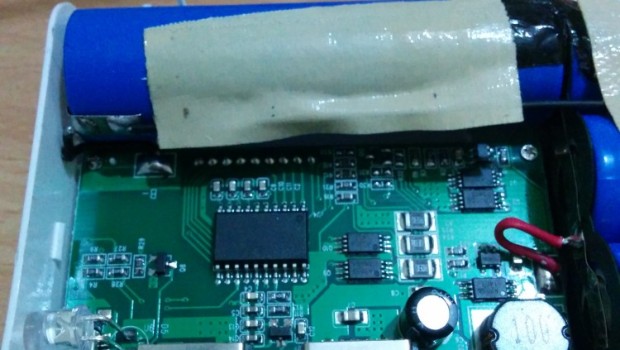
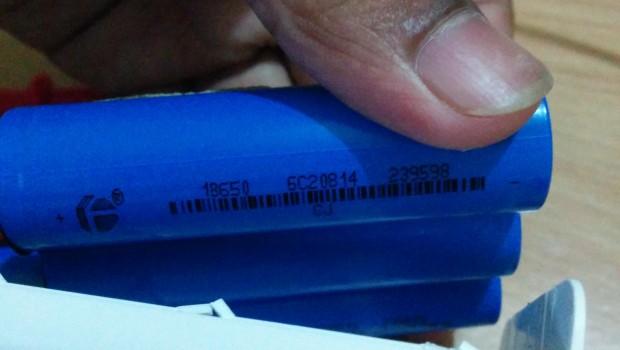
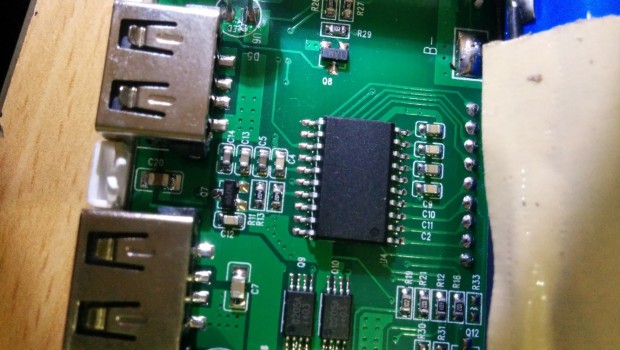
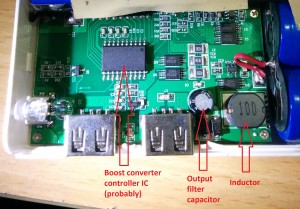
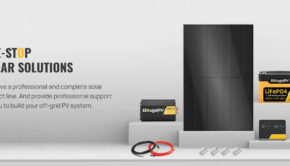
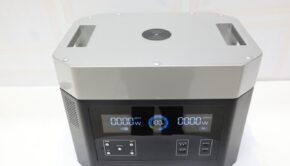

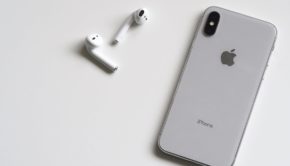










2 Responses to About Li-Ion technology and (teardown) Review of Ambrane P880